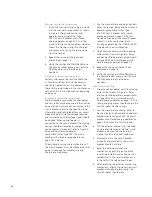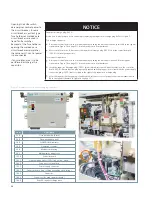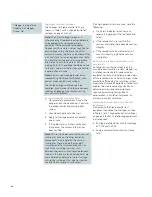
31
Inspection
Check the following points:
1. Make a final mechanical inspection of the
circuit breaker. Verify the contacts are in
the OPEN position.
2. Confirm the circuit breaker is properly set
up and reasonably level on its foundation
and appropriately anchored to the
foundation.
3. Check the tightness of all hardware on the
cabinet, adjustable legs, bushings, bus
bars and operator mechanism.
4. Verify that the operating mechanism has
been properly lubricated.
5. Blocking, supports and other temporary
ties remove from circuit breakers,
instruments, protective relays, etc.
6. Proper fuses correctly placed.
7. Temporary wiring jumpers (used on the
secondaries of current transformers wired
to external devices, as shown on wiring
diagrams) removed.
8. Ground connections properly made.
9. Incoming primary and secondary
connections properly made and checked
for shorts or undesired grounds.
10. Verify all covers, and bolted connectors
are securely fastened.
11. Protective relays coordinated with other
protective relays and protection devices
on the system. Refer to protective relay
instructions before making any
adjustments.
12. Examine the vacuum interrupters for
damage, and wipe the vacuum
interrupters and other insulating parts
with a clean, dry cloth.
13. All filters in vent areas are clean and free
of shipping or construction material.
14. Retouch any paint that has been damaged
during installation.
Shipping bracing and tag between phase barriers
(on units so equipped) may damage circuit
breaker.
May result in damage to equipment.
Remove bracing and tag (on units so equipped)
before energizing circuit breaker with high voltage.
NOTICE
Содержание SDV7
Страница 54: ...54 Table 16 Remarks ...
Страница 55: ...55 Table 16 Remarks continued ...
















































